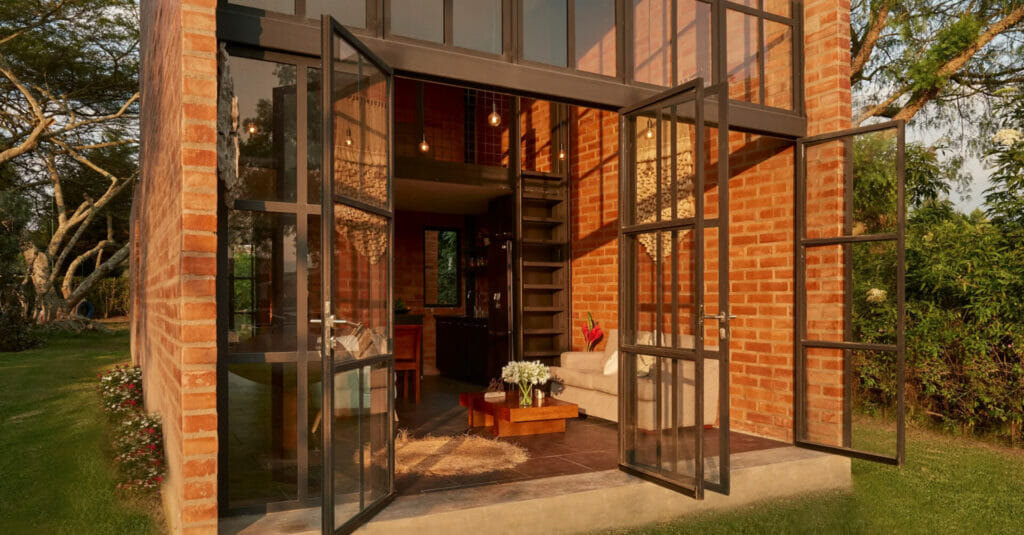Concrete, glass, metal, and brick. These are the materials used to create this 700-square-foot retreat in the heart of Napoles, Ecuador. Located in a rural region one hour outside of Quito at the base of the Andes Mountains, the compact structure is a stylistically minimalist and environmentally responsive weekend home for an artistic-minded woman and her family.
PJCArchitecture, a New York City–based firm, stepped in to bring the client’s vision to life, immediately forming relationships with local craftsmen and artisans to facilitate a holistic building process informed by ancient traditions and habitual modes. “The project was such a gem for us because it’s so different from anything we typically do,” explains Philip J. Consalvo, PJCA founder. Unburdened by the strict building codes and drawn-out processes of stateside construction, the team was free to creatively explore and use visual references to transcend language and cultural barriers. “We utilized building techniques that have been used in Ecuador since the Incas. The house is built with all natural materials that are vernacular to the area,” adds Philip.

Juank Paredes Photography
This focus on physical authenticity and elemental integrity extends throughout the entire home’s ethos. To contrast the mountain scenery’s lush greens and organic shapes, the homeowner decided on a schematic program, influenced by perpendicular geometry and a desire to distill nature’s complexity. “She was looking for biomimicry—simple forms connected by a feeling of airiness,” says lead architect on the project Nandar Godoy-Dinneen, an intention that led the team to the double volume concept.

Juank Paredes Photography
The system that contains the main living area and lofted guest space is connected to the cube that houses the primary suite via a glass-enclosed bridge, allowing for an abundance of light and an immersive experience with the outdoors. Plus, the bridge acts as a sustainable cross ventilation cooling system in the summer, whereas the brick structure absorbs heat during the day and releases it at night throughout winter. Meanwhile, the house’s orientation on the lot was carefully selected in accordance with the surrounding trees for both shade and biological harmony, and the floor plan was created to feel grounded and unobtrusive within the landscape. “The homeowner is someone who notices the way the light hits a wall or the direction in which a space is situated. She has a deep appreciation for what’s happening in nature and how it’s interacting with us,” notes Philip.

Juank Paredes Photography

Juank Paredes Photography
When the windows and doors are open, as they mostly are kept throughout the warmer months, there’s a feeling of being wholly in sync with the earth. An exterior brick wall enclave has become habitat to a plethora of potted plants and a growing community of hummingbirds. Tin was placed atop the roof at the behest of the homeowner in order to amplify the sounds of rain. The kitchen cabinetry is rendered in black to provide an extra contrast that highlights the vivid colors of local fruits and vegetables. “She was attuned to these very special elements that are the opposite of what most people would desire,” says Philip.
“During construction, she didn’t want us to throw anything away, she insisted on using our scraps for creative projects,” adds Nandar. Her handcrafted sculptures made from driftwood and textiles woven from remnants make up the decorative objects of the home. Beyond these upcycled artifacts and subtle creature comfort furnishings, the space remains intentionally bare to leave breathing room for reflection and creativity, solitude and familial togetherness. “Ultimately,” concludes Nandar, “it’s such a breath of fresh air.”

Juank Paredes Photography
Full Article from Clever
Photography by Juank Paredes
